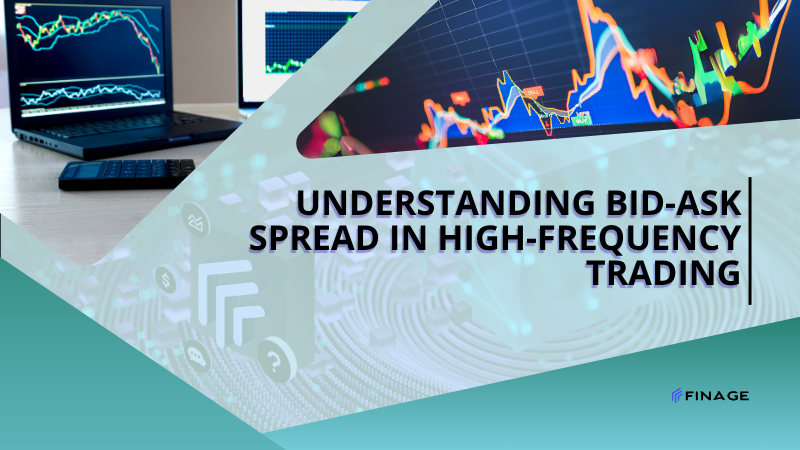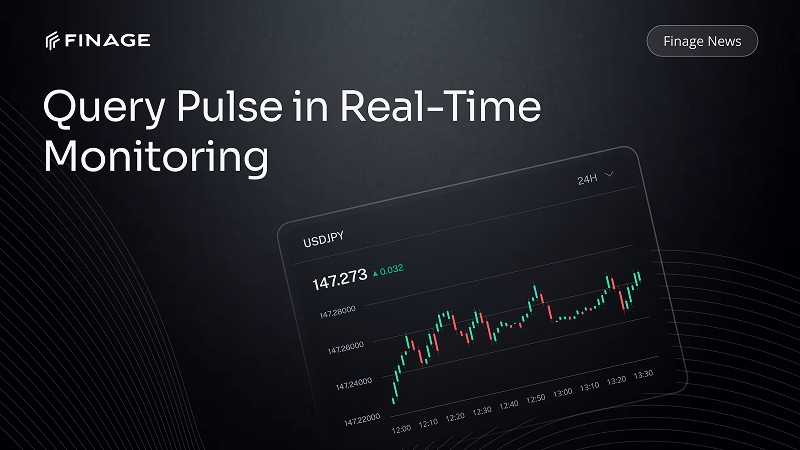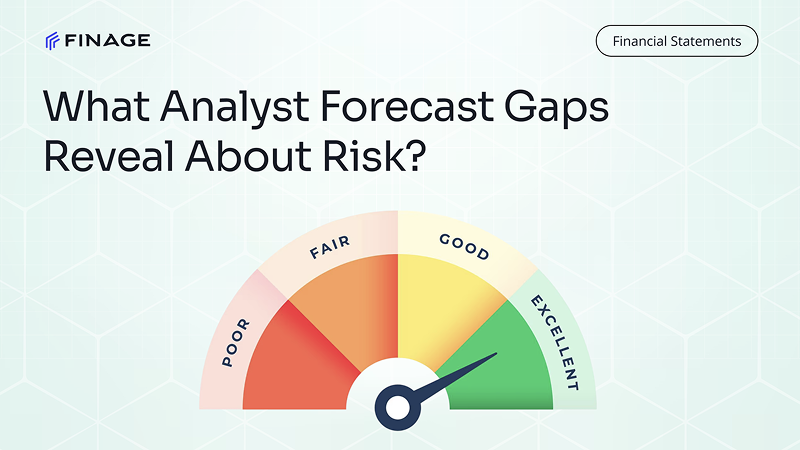Understanding Bid-Ask Spread in High-Frequency Trading
8 min read • July 17, 2025

Introduction
In high-frequency trading (HFT), speed isn't the only advantage—precision and market structure awareness play an equally critical role. One of the most important yet often overlooked elements in this environment is the bid-ask spread.
Far from being just a technical term, the bid-ask spread can impact execution quality, trading costs, and even signal underlying market dynamics. For developers and fintech teams building latency-sensitive systems, understanding how spreads behave—especially in high-frequency contexts—is key to optimizing performance.
In this article, we’ll break down what the bid-ask spread is, how it works in high-frequency trading, and why it's a central metric for anyone designing real-time execution or pricing engines.
Table of Contents
- What Is the Bid-Ask Spread?
- Why the Bid-Ask Spread Matters in High-Frequency Trading
- How Market Conditions Affect the Bid-Ask Spread
- Strategies That Exploit Bid-Ask Spread Movements
- Monitoring Bid-Ask Spread in Real Time with Finage
- Final Thoughts
1. What Is the Bid-Ask Spread?
The bid-ask spread is the difference between the highest price a buyer is willing to pay for an asset (the bid) and the lowest price a seller is willing to accept (the ask). It’s a fundamental component of every financial market and acts as both a cost indicator and a measure of market liquidity.
Here’s how it works in simple terms:
- Bid price: The maximum a buyer is offering to pay
- Ask price: The minimum a seller is willing to accept
- Spread: The difference between the two
For example, if a stock has a bid price of $100.25 and an ask price of $100.30, the bid-ask spread is $0.05. This gap may seem small, but in high-frequency environments where trades are executed in milliseconds—and often in large volumes—it becomes a critical factor.
Why does it exist? The spread compensates market makers and liquidity providers for taking on the risk of holding inventory. It also reflects supply-demand imbalances, transaction costs, and volatility in the asset.
In fast-moving markets, the bid-ask spread can widen or narrow rapidly, and those shifts provide valuable signals for traders and algorithms alike.
Understanding this spread isn’t just about knowing the mechanics—it’s about recognizing how market microstructure impacts every trade decision made by your app or strategy.
2. Why the Bid-Ask Spread Matters in High-Frequency Trading
In high-frequency trading, decisions are made in microseconds—and even the smallest market inefficiency can be turned into opportunity or loss. That’s why understanding the bid-ask spread isn’t just useful—it’s essential.
Here’s why the spread plays such a pivotal role in HFT systems:
- Execution Cost: Every time a trade is placed, the trader typically buys at the ask and sells at the bid. That difference is the inherent cost of transacting. For strategies running hundreds or thousands of trades per second, the bid-ask spread becomes a cumulative fee that directly affects profitability.
- Market Liquidity Signal: A narrow spread usually indicates high liquidity and strong market participation. A wider spread can signal uncertainty, low volume, or increased risk. HFT systems often use this as a real-time input to adjust risk parameters or pause trading.
- Arbitrage Triggers: Some HFT strategies are designed to detect and exploit discrepancies in the bid-ask spread across venues or instruments. Even minor anomalies can trigger rapid buy-sell decisions.
- Order Placement Strategy: Knowing the spread in real time allows algorithms to place limit orders more strategically—just inside or outside the current bid/ask—to maximize fill probability and minimize cost.
In fast markets, where spreads can change dozens of times per second, this microstructure data becomes an actionable input. A delay in receiving or processing this information—even by milliseconds—can mean the difference between hitting the right price and missing it completely.
That’s why reliable, real-time access to bid-ask spread data is a foundational requirement for any serious high-frequency trading system.
3. How Market Conditions Affect the Bid-Ask Spread
The bid-ask spread isn’t static—it reacts to market forces just as dynamically as price does. Understanding what causes spreads to widen or narrow is crucial for high-frequency systems that rely on price precision and fast execution.
Here are some of the key market conditions that influence the bid-ask spread:
- Volatility: When markets are highly volatile, spreads often widen. This is a defensive move by market makers to manage risk. Sudden price swings make it harder to price assets accurately, so liquidity providers demand a larger buffer.
- Liquidity: In deep, liquid markets—like major forex pairs or large-cap stocks—spreads tend to be very tight. But in thinly traded assets or during off-peak hours, spreads widen due to the lack of opposing orders.
- News and Events: During economic announcements, earnings releases, or geopolitical surprises, the bid-ask spread can fluctuate dramatically. These are moments of uncertainty where traders hesitate to quote tight prices.
- Market Fragmentation: If an asset is traded across multiple venues, inconsistencies in pricing or latency can cause temporary spread imbalances. HFT systems often watch for these gaps to act on arbitrage or passive fill opportunities.
- Time of Day: Spreads are usually narrower during peak trading hours and wider at market open/close or in overnight sessions when fewer participants are active.
High-frequency trading systems often monitor spread behavior in real time as a proxy for market stress. A sudden spike in the bid-ask spread can act as a trigger to pause activity, switch strategies, or shift to a different market altogether.
In short, tracking how the spread responds to the environment helps HFT platforms stay adaptive, reduce slippage, and avoid execution surprises.
4. Strategies That Exploit Bid-Ask Spread Movements
In high-frequency trading, the bid-ask spread isn't just a cost—it's an opportunity. Skilled HFT systems are designed to detect and act on subtle spread movements to generate profits, hedge risks, or gain execution advantages.
Here are a few common strategies that directly or indirectly exploit spread behavior:
- Market Making: These systems continuously place buy and sell limit orders just inside the spread, aiming to profit from the difference. When both sides are filled, they capture the bid-ask spread as revenue—assuming price doesn't move against them too quickly.
- Latency Arbitrage: Some HFT strategies monitor multiple venues for slight differences in bid/ask prices. If Exchange A shows a bid higher than Exchange B's ask (even briefly), a trader can buy low and sell high—capturing the spread instantly.
- Spread Widening Detection: Sudden widening of the bid-ask spread can signal a liquidity vacuum or incoming volatility. Smart systems use this as a warning to pull orders, reduce position size, or switch to risk-off modes.
- Passive Fill Optimization: Instead of crossing the spread and paying the full cost, some algorithms aim to get filled on one side of the book at favorable prices—by posting limit orders and waiting for the market to come to them.
- Dynamic Order Placement: HFT engines often adjust their order prices in real time based on micro-movements in the spread. If the spread narrows, they step in; if it widens, they step back. This protects capital and increases order efficiency.
The key to all of these strategies is real-time visibility. Without up-to-the-millisecond access to bid-ask spread data, it becomes nearly impossible to execute with the timing and accuracy that HFT demands.
5. Monitoring Bid-Ask Spread in Real Time with Finage
To effectively track and react to market microstructure, trading systems need more than just price—they need depth, speed, and accuracy. That’s why Finage delivers real-time access to bid-ask spread data across stocks, forex, and crypto through both REST and WebSocket APIs.
Here’s how Finage supports high-performance spread monitoring:
- Real-Time Quote Updates: Finage’s Stock Quote API provides up-to-date bid and ask prices so you can calculate spreads on demand or feed them into live dashboards and risk engines.
- WebSocket Streaming: For high-frequency applications, the WebSocket API allows you to subscribe to bid/ask updates in real time. No polling, no delay—just continuous updates as the market moves.
- Multi-Asset Coverage: Monitor bid-ask spread dynamics across multiple asset classes without switching providers or normalizing formats. Finage handles the infrastructure so you can focus on strategy.
- Developer-Friendly Design: With clean documentation and consistent data formats, Finage makes it easy to plug real-time spread data into algorithms, alerts, or visualizations—whether you're using Python, JavaScript, or other tech stacks.
- Reliable Infrastructure: Uptime, latency, and throughput all matter when spread-based signals are driving trades. Finage is built to scale with the demands of high-frequency strategies and mission-critical systems.
For developers, this means more than just access—it means confidence. When you’re building tools that rely on the smallest edge, knowing that your bid-ask spread data is accurate and delivered in real time can make all the difference.
Final Thoughts
In high-frequency trading, every microsecond counts—and so does every detail. The bid-ask spread, often treated as a background concept, becomes a front-line factor that influences trade timing, cost, and strategy execution.
Understanding how the spread works, what moves it, and how to respond in real time gives developers and fintech teams a tangible advantage. Whether you're optimizing order placement, managing execution risk, or building arbitrage logic, accurate spread data isn’t optional—it’s foundational.
That’s where Finage comes in.
With real-time access to bid and ask prices across global markets, streaming APIs built for speed, and developer-first infrastructure, Finage helps you turn bid-ask spread data into a competitive edge. Whether you're building a high-frequency engine or refining a low-latency alert system, Finage gives you the visibility and performance to move with the market—not behind it.
Explore the Finage API documentation and start building smarter, faster, and more responsive trading applications—powered by real-time precision.
Claim Your Free API Key Today
Access stock, forex and crypto market data with a free API key—no credit card required.

Stay Informed, Stay Ahead
Finage Blog: Data-Driven Insights & Ideas
Discover company news, announcements, updates, guides and more

.png)
